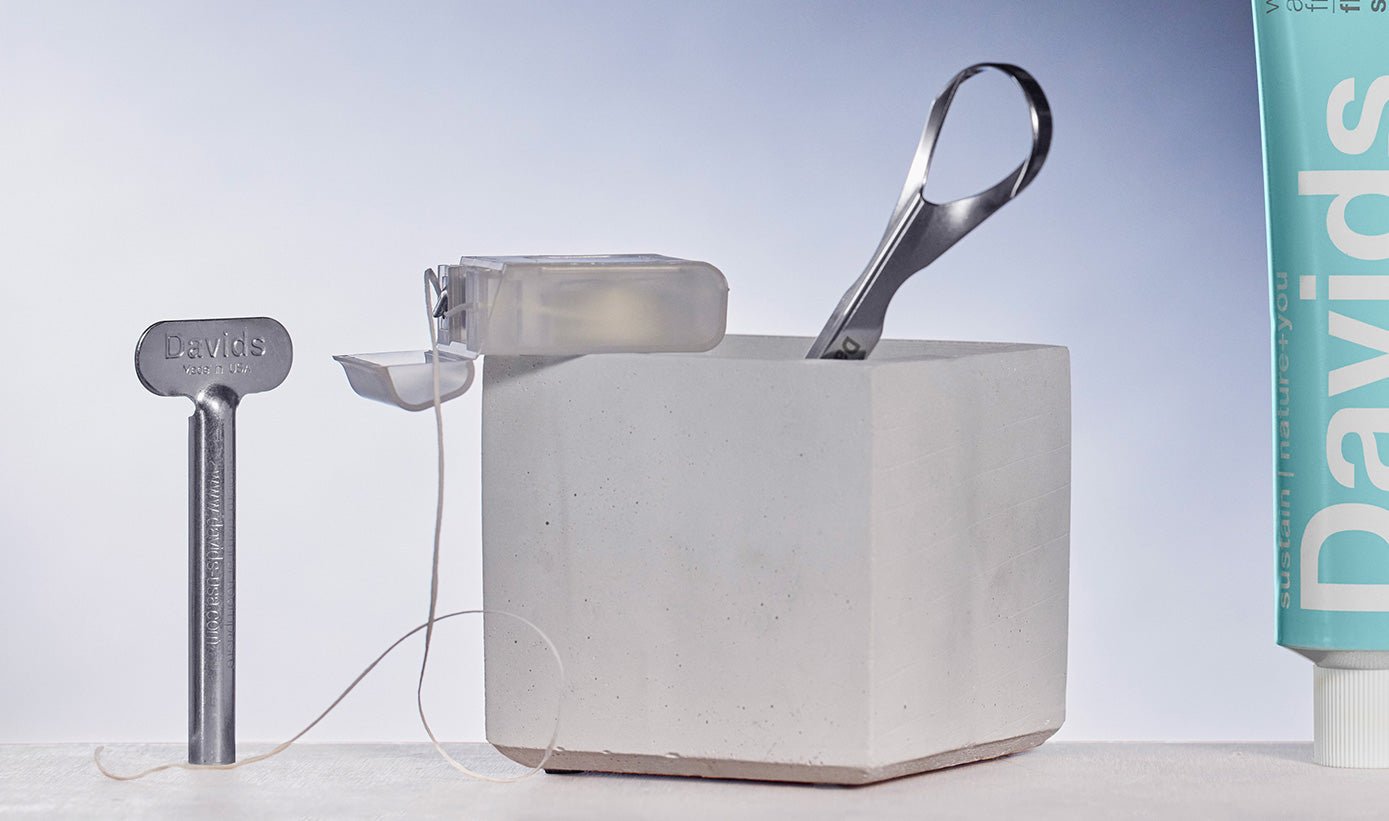When dealing with sensitivity, it’s tempting to skip flossing (and brushing) those tender areas. It might seem counterintuitive to “rub” those super-sensitive teeth with your floss and toothbrush, but skipping over those parts can drastically worsen your sensitivity.
If you maintain proper brushing habits but still experience a lot of sensitivity, it might be because you’re skipping flossing. Did you know brushing alone leaves about one-third of your tooth’s surface untouched? This allows bacteria to fester, plaque to build up, and sensitivity to take over in those tight crevices between your teeth. Don’t worry though, regular flossing with hydroxyapatite floss can soothe that pesky sensitivity. Let’s explore how!
how flossing can soothe sensitivity
Daily use of hydroxyapatite floss helps to remove plaque from your teeth, keeping your gums healthy and your sensitivity at bay. If you leave the plaque to linger, it can form into tartar: a hardened version of dental plaque that can lead to gum disease, enamel erosion, and severe sensitivity. Once tartar forms, it can only be removed by dental hygienists using a scalar (that hard metal hook tool used to scrape your teeth at the dentist).
When you make a habit of hydroxyapatite floss, you can break down plaque, prevent tartar buildup, and deliver a much-needed dose of minerals to those hard-to-reach parts of your enamel. The nanoparticles in the hydroxyapatite floss bind to your tooth, strengthening your enamel from the inside out to prevent damage and relieve sensitivity at the source.
So next time you feel stubborn sensitivity, don’t toss the hydroxyapatite floss.
one tooth hurts when I floss
If one tooth hurts when you floss, there could be many explanations. We’ve outlined a few common ones below.
- improper technique: rough flossing (and brushing) can cause sensitivity instead of soothing it. Has your sensitivity only appeared after you added flossing into your routine? This could indicate improper technique (don’t worry, we’ll cover our favorite technique tips in the last section).
- irreversible sensitivity: sometimes sensitivity is “too far gone” for at-home brushing and flossing. For example, you might need a dental professional to remove tartar buildup. Maybe your gum has receded so far (from gum disease) that your tooth’s nerve passageways are exposed around the gumline. Maybe you’re just genetically predisposed to stubborn sensitivity. These things could require dental work to stop the pain.
- tooth decay: flossing that tooth can cause intense pain if tooth decay is already present. Tooth decay tends to start in those tight crevices between your teeth, so pain after flossing a certain tooth can unveil tooth decay you didn’t previously notice. If tooth decay is the problem, your dentist can give you a deep cleaning and a treatment plan.
- dental work: if one tooth hurts when you floss, be sure to ask yourself if you’ve had any dental work (recent or past) in that area. Pain in one spot could indicate a loose crown or a cracked filling.
This is not a comprehensive list. If you have one (or more) sensitive spot that won’t go away no matter how much you brush and floss with hydroxyapatite, reach out to your dentist.
lingering pain after flossing
If you have lingering pain after flossing, many of the causes above also apply. However, the difference here is that the lingering pain exists throughout your entire mouth instead of in one spot. If that’s the case, you could be dealing with gum disease.
When the pain lingers for days, try to notice any other symptoms. Are your gums bleeding after you floss (even though you’ve been flossing for a while? Do your gums appear red and inflamed? Do your gums appear “detached” from your tooth, leaving pockets where bacteria can build up?
No matter what, lingering pain after flossing (especially if it lasts over a week) is enough cause to visit your dentist.
how to relieve gum pain from flossing
If you’re new to flossing, it’s common to experience gum discomfort and intermittent bleeding. To soothe these symptoms, here are a few at-home remedies.
- warm saltwater rinse: rinsing with saltwater can reduce plaque buildup, swelling, and inflammation. It can also increase your mouth’s pH, making it harder for bacteria to thrive.
- hot or cold compress: place a heating pad or an ice pack on the outside of your cheek to soothe the pain and reduce inflammation.
- smooth waxed floss: our hydroxyapatite floss is coated with vegan wax and cocoa butter for a gentle glide. This should help you avoid “jamming” the floss into your teeth and placing too much pressure on your gums.
However, if the pain persists (especially if accompanied by swelling and a fever), visit your dentist. They can tell you if the pain results from gum disease, an infection, or another oral condition.
our top tips for the best flossing experience
For a soothing flossing experience, we’ve outlined the importance of the product you’re using… and how to floss properly.
- use our hydroxyapatite floss: as mentioned, this is crucial for delivering essential minerals to those tight crevices between your teeth. Our floss utilizes an innovative design to expand while you use it and cover more surface area of your tooth.
- pair it with hydroxyapatite toothpaste: hydroxyapatite toothpaste can be a game-changer for sensitivity. If you experience one or more sensitive spots throughout your day (especially when you brush or floss), add our hydroxyapatite toothpaste to your routine. You might just notice some relief within a few days of consistent brushing!
- follow a proper flossing technique: like grabbing 12 inches of floss and forming a U-shape around each tooth to scrub the surface. In this previous article, we outline how to floss the right way. This can help you avoid unnecessary gum pain and bleeding.
Remember, floss plays an important role in your oral and overall health, working to fight plaque, gum disease, and sensitivity in the tightest parts of your mouth. Don’t gloss over the importance of floss!







